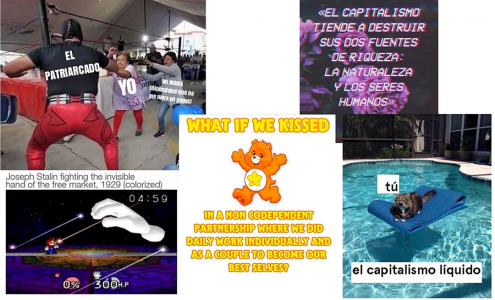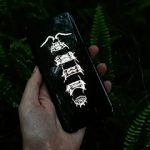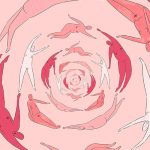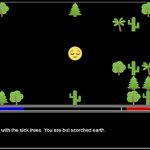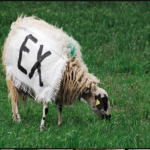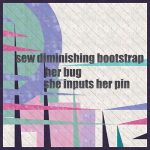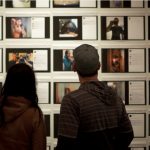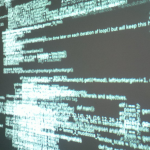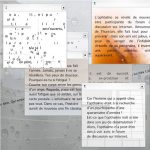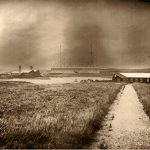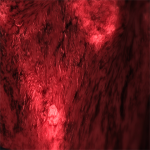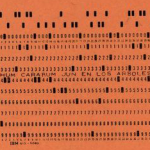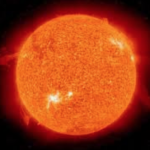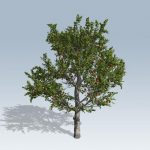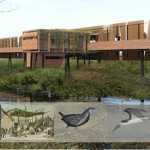2020
Alex Saum-Pascual on e-lit's relocation to platforms with massive user bases, and the beauty of meh.
Fostering a sense of connection or engagement towards the more–than–human world, or what David Abram has termed the “sensual world,” has the potential to allow humans greater understanding of our ecological place in inter–species communities. Digital artist Alinta Krauth enacts this understading with Diffraction, a mobile digital writing artwork that encourages users to experience a heightened sense of more–than–human relationality while outdoors. Krauth's practice–led research advances her argument "by using locative media, and emplaced play, as positive forces for considering our relationships with wild nonhuman Others."
Gathering screen images and texts shared by artist Les folies passagères on Instagram, Gravel-Patry addresses issues of care that affect women on a daily basis, from mental health to body dysmorphia - but also creating expansive life worlds through our relationality with the digital image, how we operationalize it so that we might think and feel our lives differently.
By now, Cultural Ecology, Ecocriticism, and Environmental Humanities can tell us all we need to know about climate change. What's still needed, however, is for authors and artists to reconceptualize environmental issues as social and human questions rather than mere technical ones.
Annie Abrahams reflects on the right classification of her own ... what, exactly? Hypertext work? Net Art, electronic literature, digital art, intermedia art, computer fine arts, internet art, interactive writing experiment, computer art, poetry, flash art, animation, hypermedia, lecture, digital print, performance, opera, sound piece, contemporary art, video art? Rather than settle on tags that were mostly based on technology and didn't say anything about what was experienced through the work, Abrahams now profers a behavioral art that considers human/machine interactions somewhat in the way behavioral science in the 1970s "studied monkey behavior in a cage."
Elaborating on interspecies and translab experimentation. Escaja's interactive digital arts projects reclaim the notion of “transhumant,” a single term for nomadic practices that are shared by both the livestock and its shepherd. Both projects, Negro en ovejas (ovine poem) and Emblem/as, prioritize dislocation and nomadic multiplicity, which constitute a basis for resistance to and reconsideration of monolithic notions and canonical impositions.
Taking his cue from the first line of Lady Mary Wroth’s 17th Century sonnet sequence, “In this strange labyrinth how shall I turn?” Corey Sparks locates readers in a contemporary, procedural sonnet at the intersection of electronic literature, digital edition creation, gaming, and literary poetics. Sparks includes a photo of a reconstructed medieval labyrinth, taken at St. Fin Barre's Cathedral in Cork, Ireland during his attendance at the 2019 Electronic Literature Organization conference.
On feminist futures of electronic literature (and interactive narrative, more broadly construed).
Christelle Proulx argues that screen captures in art and literature projects introduce three different effects on the representation of online world and its relation to offline world. The spatiotemporal specificities of the images produced are first considered through the photographic as a category of thought, then the importance of location is interrogated via the situated knowledges of Donna Haraway (1988) and concludes on the interface effects of this kind of imaging practice.
The authors speculate why some are bored by the goal of computational generation of "human-like" text. Inspired by Italo Calvino's alternative, minor strain in "Cybernetics and Ghosts," they argue that this kind of text generation provides an opportunity to destabilize as well as refine our sense of the differences between human and machine cognition.
Bouchardon and Mayer in this essay question the narrative model of personal identity – the idea of the self as a story – in light of contemporary forms of electronic literature.
Working with a custom-coded, automated-art-system of their own devising, Australian digital artists Karen Ann Donnachie and Andy Simionato have now archived a literary corpus for future study in what they have called The Library of Nonhuman Books. Yet it remains uncertain whether human scholars will visit Donnachie's and Simoniato's virtual library. Seeing as how "there are no human ‘typewriters’ now, how can we be sure there will still be human ‘readers’ in the future?"
In this keynote, presented at the 2019 Electronic Literature Organization conference in Cork, Ireland, Anne Karhio highlights the importance of electronic literature as no less peripheral in its own construction of social, cultural, networked communities and material geographies. By looking also at recent scholarship on digital infrastructures, media archaeology, and new materialist approaches to communications technology, Karhio delineates changes that emerge from the margins, "from experimentation and risk-taking that questions established conventions, and canons, and flickers at the border of the actual and the imaginary."
Against the backdrop of écriture feminine and e-lit texts, Ensslin et. al advance methods and findings of the "Writing New Bodies" project (“WNB”; SSHRC IG 435-2018-1036; Ensslin, Rice, Riley, Bailey, Fowlie, Munro, Perram, and Wilks) to lay the foundations of Applied E-literature Research. Their aim is to develop a digital fiction for a new form of contemporary, digital-born bibliotherapy. In following the principles of critical community co-design and feminist participatory action research, WNB engages young woman-identified and gender nonconforming individuals ages eighteen to twenty-five in envisioning worlds where they feel at home in their bodies. The workshops encourage them to engage, conversationally and through reading, co-designing and writing digital fiction, with key challenges facing young women today, including cis- and heteronormative gender relations, racism, anti-fat attitudes, ableism, and familial influences on the ways young women “ought to look” (Rice). This essay originally appeared as a keynote at the 2019 ELO conference in Cork, delivered by Ensslin.
Given the longstanding but limited readership for North American, Euro and Scandinavian e-lit, will Latin America succeed in carrying its experimental and avant-garde approaches to a general e-lit audience? Claudia Kozak's expanded keynote for the 2018 ELO conference in Montreal, titled "Mind the Gap!", explores some first forays in this direction: practices that might hearken back to Puig and Borges in print; Omar Goncedo, Eduardo Darino, Erthos Albino de Souza and Jesús Arellano in the era of mainframes; and (not least) fan fiction over pretty much the entire span of literary writing.
Image: Omar Gancedo, IBM (1966).
Citing Catherine Gallagher on fictionality’ as the ontological ground of the novel,’ LeMenager seeks a similar `alternative grounding’ for progressive, transgenerational social change in a time of epistemic and ecological crisis. The essay is one of many selected for co-production in ebr and our two collections from Bloomsbury Academic, Post-Digital: Critical Debates from electronic book review .
2019
This collection emerges from a panel hosted by the Modern Language Association's MS Forum on Visual Media (http://naturalmedia.org/titles/) in 2017. "Natural media" re-valuates the communicative potential of natural spaces, especially in instances where symbolic import collides with raw matter in a manner that hides from, disguises, or elides stark reality. It considers intersections, collisions, tensions, opportunities, and affordances that arise in the discussion of "Natural Media," both broadly conceived and in its contributors' particular areas of research. It is also in close conversation with research inspired by a previous gathering on a closely related topic: Digital and Natural Ecologies.
Toward a more expansive standard of botanical, graphical, ecosystemic and (not least) digital realism.
Can we again devise bots, in the tradition of Nigel Leck's AI_AGW, capable of staving off environmental disaster and saving humanity from its own stupidity? Twitter has censored this particular bot that Leck created ¨with the singular mission of hunting down false claims made by climate change deniers, calling them out, and correcting them with information linked from peer-reviewed essays in scientific research journals.¨ With this interview, ebr and our Natural Media co-editors celebrate and memorialize this noble, though brief realization of the critical and creative potential of community built digital media.
A slightly different version of this work originally appeared as part of a longer article, "The Architectural History of Disappearance: Rebuilding Memory Sites in the Southern Cone," in the December 2014 issue of the Journal of the Society of Architectural Historians. I am grateful to the University of California Press for permission to reproduce portions of that work here.
